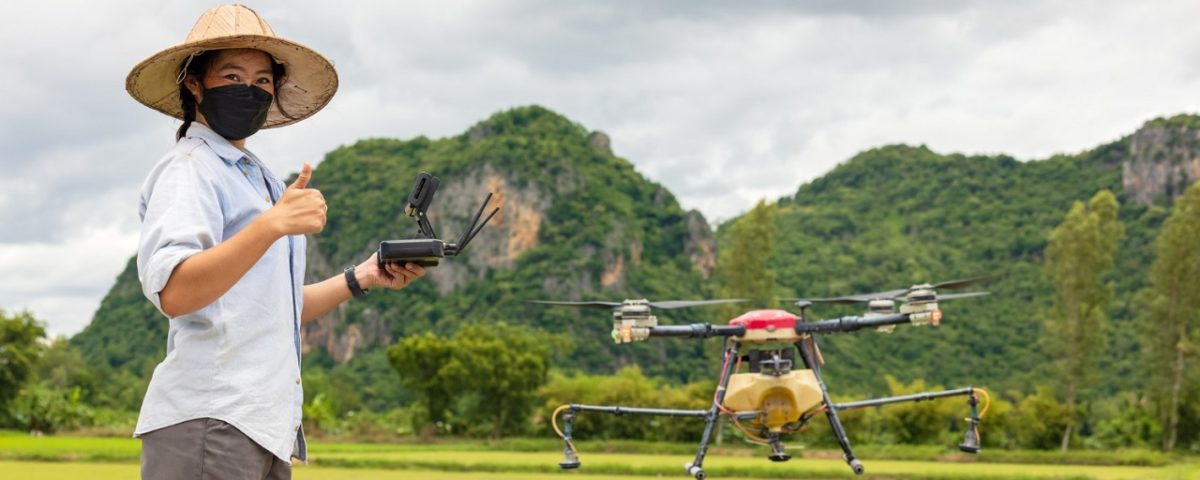Flying a drone can be an exhilarating experience, but it also requires skill and knowledge. Whether you’re flying for fun or for work, understanding the basics of drone operation is critical to ensure your safety as well as that of those around you. With the right guidance and practice, anyone can learn how to fly a drone. In this guide, we’ll provide some tips on getting started with drone flight and share some important information about operating drones legally and responsibly. So let’s get ready to take off!
Choose a drone that fits your needs and budget
Before you buy a drone, it’s important to consider your needs and budget. Different drones have different features and capabilities so it’s important to do some research before making a purchase. Consider the size of the drone, its battery life, flight time, camera quality, and range, as well as any additional features that may be useful for your flying needs.
Your skills in flying the drone will also depend on what you want to use the drone for. If you are using it for racing or recreational purposes, then you should consider the speed and control of the drone. If you are using it for aerial photography or other commercial purposes, then you should look for a drone with a high-quality camera and gimbal to get the best images. No matter what your needs are, there is sure to be a drone that fits them perfectly.
Choose an appropriate area to fly
When selecting a place to fly your drone, be sure that it is safe and legal. Most countries have laws restricting or prohibiting the use of drones in certain areas such as airports or residential neighborhoods. There are also height restrictions for flying drones so make sure you understand what those are in your area before taking off. Make sure you’re familiar with the airspace rules and regulations in your area before you fly.
Practice basic flight control
Once you’ve chosen a drone and an area to fly in, it’s time to start practicing. The most important thing when flying is learning the basics of flight control. This includes understanding how to move your drone with the remote controller, as well as how different inputs affect the movement of the drone. Start by getting comfortable with basic maneuvers such as hovering in place, turning left and right, and taking off and landing safely. With practice, you’ll soon be able to master more advanced moves like flips, rolls, and figure eights.
Know safety best practices
It’s important to always fly responsibly and follow all safety guidelines when operating a drone. Make sure that you can maintain the visibility of your drone at all times, and that you avoid flying over people or animals. Be aware of your surroundings and be mindful of other aircraft in the area. And always check the weather before you fly, to make sure conditions are safe for your flight.
Understanding Drone Safety & Regulations
Before you fly a drone, it’s important to understand the safety protocols and legal regulations that apply in your area. Generally speaking, drones may only be flown during daylight hours and must remain below 400 feet of altitude at all times. Additionally, they must stay within the visual line-of-sight of the operator at all times – meaning that you should not fly beyond what you can see with your own eyes. Most areas also prohibit flying over people or sensitive locations such as airports or military bases. Make sure to familiarize yourself with local laws and regulations before taking off.
Practicing & Refining Your Skills
Once you have a basic understanding of how to control the drone and are familiar with local regulations, it’s time to start practicing. Start by taking off and hovering in one spot while slowly getting used to the controls. As you become more comfortable, try doing some simple maneuvers like circles or figure eights. Eventually, you can work your way up to more complex movements such as banking turns or flying around obstacles. With enough practice and patience, you’ll gradually gain mastery over the drone and be able to perform complicated maneuvers with ease.
Flying a drone can be an incredibly rewarding experience if you take the time to learn and practice. By following these steps and understanding the regulations, you’ll be ready to get your drone off the ground (safely!) in no time. So what are you waiting for? Get out there and show us what you can do! Happy flying!


